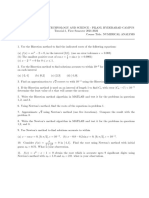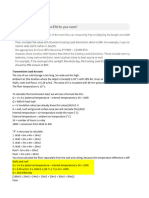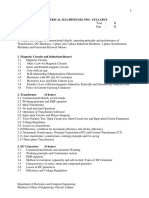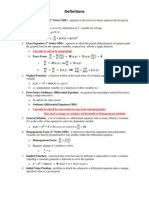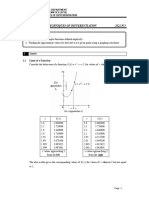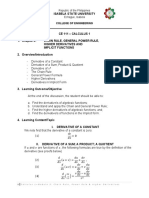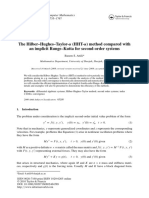0% found this document useful (0 votes)
584 views4 pagesFirst-Order Partial Derivatives
1) The document discusses partial derivatives of multivariable functions. Partial derivatives show the instantaneous rate of change of a function with respect to one variable, while holding all other variables constant.
2) It provides examples of calculating first, second, and third order partial derivatives of various multivariable functions. Notation for higher order partial derivatives is also explained.
3) Calculating partial derivatives involves differentiating a function with respect to one variable at a time, treating all other variables as constants. Higher order partial derivatives are found by further differentiating the first order partial derivatives.
Uploaded by
Rochelle ParedesCopyright
© © All Rights Reserved
We take content rights seriously. If you suspect this is your content, claim it here.
Available Formats
Download as PDF, TXT or read online on Scribd
0% found this document useful (0 votes)
584 views4 pagesFirst-Order Partial Derivatives
1) The document discusses partial derivatives of multivariable functions. Partial derivatives show the instantaneous rate of change of a function with respect to one variable, while holding all other variables constant.
2) It provides examples of calculating first, second, and third order partial derivatives of various multivariable functions. Notation for higher order partial derivatives is also explained.
3) Calculating partial derivatives involves differentiating a function with respect to one variable at a time, treating all other variables as constants. Higher order partial derivatives are found by further differentiating the first order partial derivatives.
Uploaded by
Rochelle ParedesCopyright
© © All Rights Reserved
We take content rights seriously. If you suspect this is your content, claim it here.
Available Formats
Download as PDF, TXT or read online on Scribd
/ 4






































